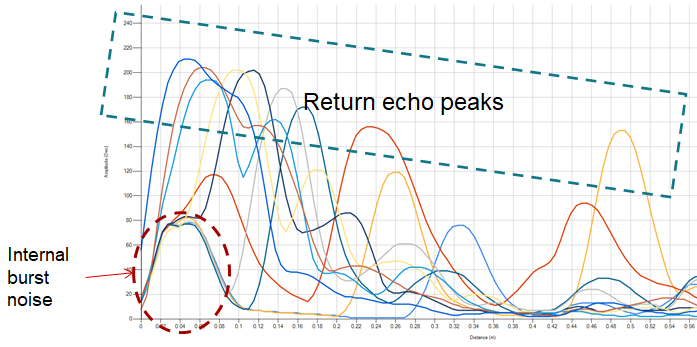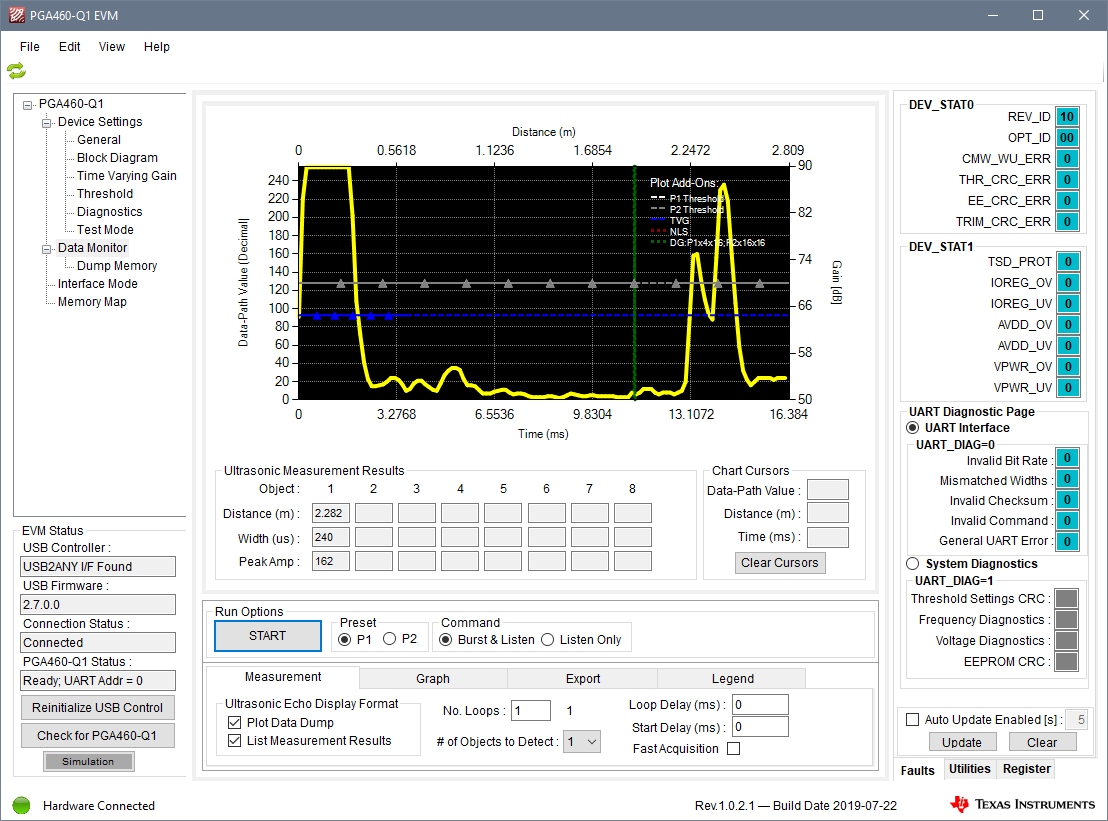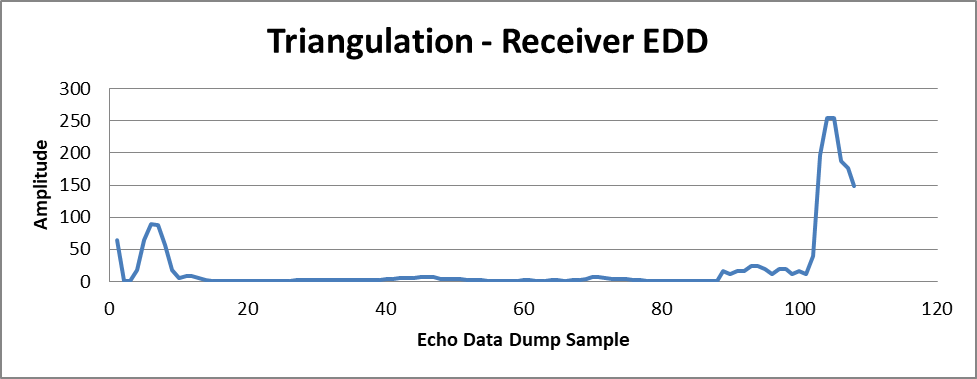Other Parts Discussed in Thread: PGA460, MSP-EXP430F5529LP, ENERGIA, BOOSTXL-PGA460,
Hi team,
I tried to use a bi-static transducer pair [a separate transmitter and receiver] with PGA-Q1. I followed the instructions on the datasheet: desolder the 0-Ω resistor at R36 and connect the receive-only transducer to the J14 socket.
However, when I used the GUI program to check the echo signal, I can always find a initial burst signal no matter where I put the receiver (e.g., even not facing transmitter). I am wondering if there is a setting that can set the transmitter to burst and let the receiver only listen for the signal?





